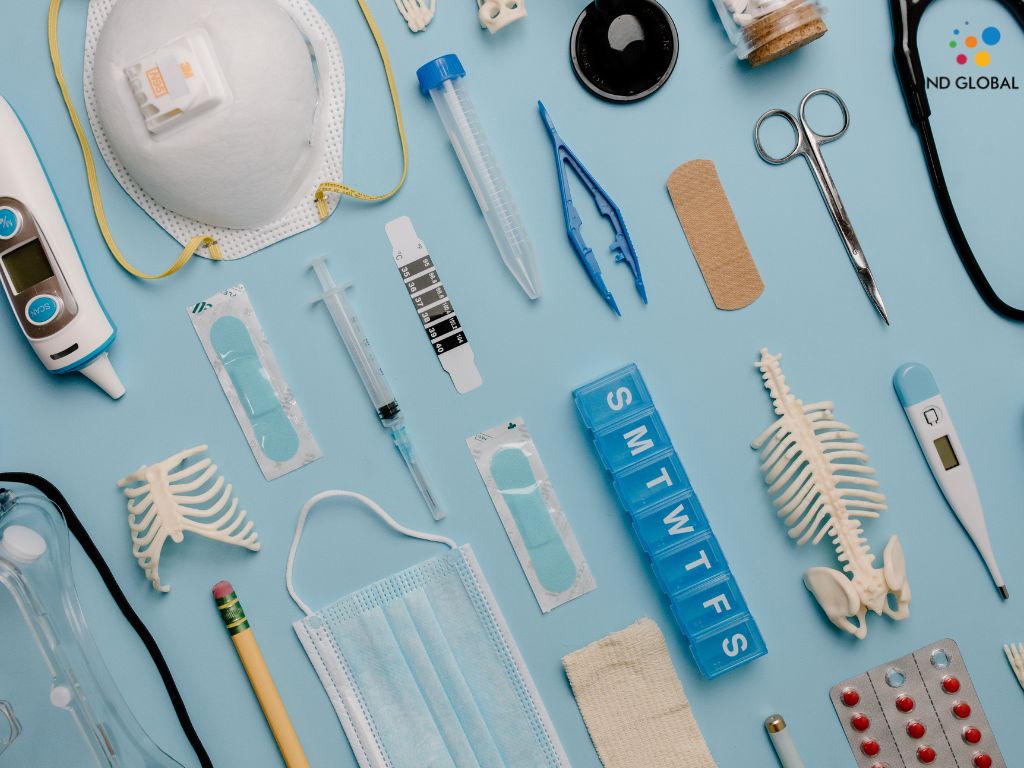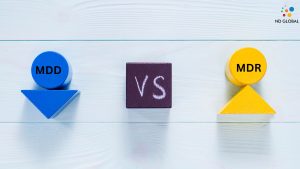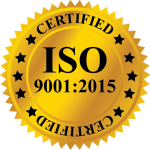Introduction – The Food and Drug Administration (FDA) guarantees the efficacy and safety of medications, biologics, and medical devices. The FDA’s medical device regulatory procedure is a significant obstacle to innovative medical technology developers getting their products to market. Medical device manufacturers can apply under the 510(k) regulatory pathway to get FDA approval to market an eligible product in the United States. A medical device maker that wants to use the 510(k) pathway must submit a premarket notification to the FDA with details on the device’s intended use, design, and performance characteristics compared to a predicate device. Proving that a device is “substantially equivalent” to one that has already received FDA clearance and is being sold commercially is the aim of the 510(k) submission. They call this a “predicate device.” The FDA evaluates the 510(k) submission to determine whether the device is equivalent to the predicate and functions as intended. The FDA will issue a clearance letter enabling the maker to commercialize the device in the US once it has concluded that it is substantially equivalent to a predicate device. It’s crucial to understand that FDA clearance under the 510(k) pathway means the FDA has found the device comparable to an existing, similar product on the market, not that the FDA has authorized it.
For most Class II devices, a 510(k) submission is the route to market. Three categories of 510(k) submissions exist:
- Traditional 510(k)
- Special 510(k)
- Abbreviated 510(k)
What is 510 (k) – Medical device manufacturers can apply under the 510(k) regulatory pathway to get FDA approval to market an eligible product in the United States. A medical device maker that wants to use the 510(k) pathway must submit a premarket notification to the FDA with details on the device’s intended use, design, and performance characteristics in comparison to a predicate device. Proving that a device is “substantially equivalent” to one that has already received FDA clearance and is being sold commercially is the aim of the 510(k) submission. They call this a “predicate device.” The FDA evaluates the 510(k) submission in order to determine whether the device is equivalent to the predicate and functions as intended. The FDA will issue a clearance letter enabling the maker to commercialise the device in the US once it has concluded that the device is substantially equivalent to a predicate device. It’s crucial to understand that FDA clearance under the 510(k) pathway means the FDA has found the device to be comparable to an existing, similar product on the market, not that the FDA has authorised the device.
What is a Predicate device – Choose a key reference device that, in terms of technological features and indications for use, most closely resembles the device you plan to submit under the 510(k) Programme. You may be able to attribute SE to more than one predicate in some situations. We advise identifying the predicate device(s) and their 510(k) number.
Information that can be used to find a predicate device:
- Names of similar devices – traded name under which the device is marketed;
- Manufacturer(s) of the similar device(s);
- Marketing status, i.e., preamendments or post amendments device;
- 510(k) numbers for post amendments devices;
- Classification information, i.e., product codes, classifying regulations, etc., for your device.
Requirements for 510(k) clearance – A medical device needs to fulfill a number of requirements in order to be eligible for 510(k) approval, which we’ve listed and briefly discussed below.
- Level of Device Risk: The FDA has developed three levels of control based on each device’s risk level to achieve a balance between efficiency and safety. Devices exempt from premarket filing fall into the first level, minimal risk. Premarket Notification, or 510(k), represents the second level of risk, which is medium. Premarket Approval (PMA) represents the third level of risk, which is high.
- Premarket Notification is typically not applicable to low-risk devices, which include most Class I and some Class II devices.
- Most Class II and a few Class I devices are classified as medium-risk devices (510(k)).
- Class III devices that sustain or support life, are implanted, or pose an unjustifiable risk of disease or harm are considered high-risk devices (premarket approval).
- Device Type: The 510(k)-clearance procedure does not apply to all devices. For instance, 510(k) clearance is unavailable for customized devices, devices meant for research use, or devices intended to be used as parts of another device.
- Device History: The FDA cannot have previously recalled, outlawed, or placed limitations on the device. The device’s application for premarket approval or 510(k) clearance has been allowed.
- Device Characteristics: The device must be made in compliance with 21 CFR 820 Quality System Regulation (QSR) and cannot unreasonably endanger the public’s health or safety. Additionally, the device must adhere to any applicable performance requirements, like those set forth by international standards organizations or the FDA.
Different types of 510 (k):
The Traditional 510(k) – Any original device that has not been previously cleared and does not need to go through the PMA process is used under the Traditional 510(k) method. It is also employed in cases where a previously approved device has modifications that render it ineligible for a Special 510(k). You must be able to identify predicate devices based on their technological features and usage signs.
Timeline: The FDA seeks to provide a SE or NSE determination within 90 calendar days of receiving a traditional 510(k) application. Nevertheless, the FDA has the right to halt the clock during the ninety days of the review process to require more information from the submitter.
Special 510 (k) – A manufacturer’s lawfully marketed predicate device that has already received approval for commercial distribution is the subject of the Special 510(k) request. The initial Special 510(k) advice was revised in the most recent version to permit reviews of modifications that impact a device’s intended use or change the device’s core scientific technology.
Before this upgrade, the Special 510(k) prohibited those modifications. The FDA’s new advice emphasizes the manufacturer’s design control processes for assessing the changes and guaranteeing accurate findings without affecting the legal requirements for significant equivalency. The procedures’ established nature and the ability to adequately analyze outcomes in a summary or risk analysis style are what regulators want to know.
Timeline – In addition to being easier to prepare than a standard 510(k), a unique 510(k) provides the benefit of a shorter timeline: Within 30 calendar days of receiving a particular 510(k) submission, the FDA reviews it and reacts. Your submission will immediately be converted to a standard 510(k) if the FDA decides that your novel medical device is not eligible for clearance through a special 510(k). Because a customized 510(k) does not contain all of the necessary elements for a standard 510(k), this usually results in an RTA warning. Remember, if you’re considering filing a special 510(k).
Abbreviated 510 (k) – An alternative to the conventional route was created in the form of the Abbreviated 510(k) program. Manufacturers may file an abbreviated 510(k) if the submission is predicated on voluntary consensus standards, FDA guidance documents, or proof of compliance with exceptional control(s) relevant to the device type. The same sections as in a traditional 510(k) submission must be included in an abbreviated 510(k) submission; however, manufacturers may add brief reports on guidance papers, exceptional control compliance, or standard conformance to show substantial equivalency.
Although it may not need as much labor, the abbreviated method may be an option if employing a predicate device proves equivalency to a standard is more complicated. Although it usually takes 90 days, the Abbreviated 510(k) review period may take longer than the Traditional 510(k).
Timeline: Despite what its name suggests, an abbreviated 510(k) has the same response time as a standard 510(k)—90 calendar days.
Conclusion – The 510(k) regulatory pathway offers a means to gain FDA clearance for eligible medical devices by demonstrating substantial equivalence to predicate devices already on the market. This pathway, although designed to streamline the approval process, presents challenges and complexities that must be carefully managed. The 510(k) regulatory pathway plays a vital role in facilitating the introduction of new medical technologies to the market while ensuring patient safety and public health. By adhering to FDA regulations and leveraging the appropriate submission pathway, medical device manufacturers can navigate the regulatory landscape effectively and bring innovative solutions to healthcare providers and patients in a timely manner.
How ND Global can help – ND Global can provide valuable assistance to medical device manufacturers navigating the complexities of the 510(k) regulatory pathway. Our team of experts specializes in regulatory affairs and can offer comprehensive support throughout the submission process.
Here’s how ND Global can help:
- Regulatory Guidance: We provide expert guidance on understanding FDA regulations and requirements for 510(k) submissions. Our team ensures that manufacturers have a clear understanding of the regulatory landscape and can develop strategies to navigate it effectively.
- Submission Preparation: ND Global assists in the preparation of 510(k) submissions, ensuring all necessary documentation is complete and accurate. We help manufacturers compile essential information, including device specifications, intended use, performance characteristics, and predicate device comparisons.
- Predicate Device Identification: Our experts assist in identifying suitable predicate devices for demonstrating substantial equivalence. We conduct thorough research to find predicate devices with similar technological features and indications for use, ensuring a strong basis for the submission.
- Timeline Management: ND Global helps manufacturers manage the timeline for 510(k) submissions, ensuring timely preparation and submission of documents. We monitor the review process closely and address any inquiries or requests for additional information from the FDA promptly.
- Compliance Assurance: Our team ensures that devices meet all regulatory requirements for 510(k) clearance, including adherence to quality system regulations (QSR) and performance standards. We help manufacturers maintain compliance throughout the submission process.
- Response to FDA Feedback: If the FDA requests additional information or clarification during the review process, ND Global assists in preparing and submitting responses. We ensure that responses are comprehensive and address all FDA concerns effectively.
- Abbreviated 510(k) Support: For manufacturers considering the abbreviated 510(k) pathway, ND Global provides guidance on eligibility criteria and assists in preparing submissions based on voluntary consensus standards or FDA guidance documents.
- Continuous Support: ND Global offers ongoing support to manufacturers even after 510(k) clearance is obtained. We assist with post-market surveillance, compliance monitoring, and any additional regulatory needs that may arise.
By partnering with ND Global, medical device manufacturers can navigate the 510(k) regulatory pathway with confidence, ensuring timely approval and market access for their innovative products.










